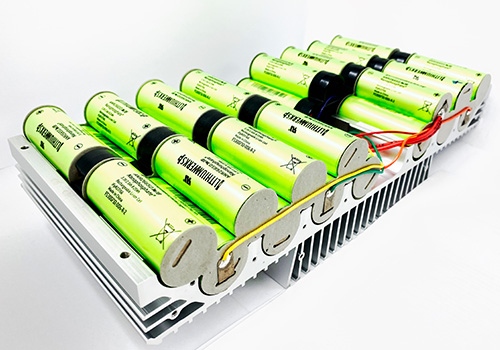Rechargeable lithium-ion batteries have become the backbone of modern energy storage, powering an array of devices from smartphones to electric vehicles. Understanding the inner workings of these batteries reveals the science behind their efficiency and versatility. In this exploration, we delve into the fundamentals of how rechargeable lithium-ion batteries function, explaining the process that makes them a preferred choice for numerous applications.
The Basics:
A rechargeable lithium-ion battery comprises key components: an anode, cathode, separator, electrolyte, and two current collectors (positive and negative). These elements work in harmony to facilitate the movement of lithium ions between the anode and cathode, driving the charging and discharging cycles.- Anode and Cathode: The anode and cathode serve as reservoirs for storing lithium ions during the battery's operation.
- Separator: The separator acts as a barrier, preventing the direct flow of electrons while allowing the movement of lithium ions between the anode and cathode.
- Electrolyte: The electrolyte carries positively charged lithium ions, facilitating their travel back and forth between the anode and cathode through the separator.
- Current Collectors: The positive and negative current collectors enable the flow of electrical current within the battery.
Charge/Discharge Cycle:
During the discharge phase, when the battery provides an electric current, the anode releases lithium ions to the cathode. This generates a flow of electrons from one side to the other, creating the electrical current that powers devices such as cell phones or computers. When charging the device, the process reverses: lithium ions are released by the cathode and received by the anode, preparing the battery for the next discharge cycle.
Energy Density vs. Power Density:
Two critical concepts associated with batteries are energy density and power density. Energy density, measured in watt-hours per kilogram (Wh/kg), represents the amount of energy the battery can store relative to its mass. On the other hand, power density, measured in watts per kilogram (W/kg), gauges the battery's ability to generate power concerning its mass. Think of energy density as the size of a pool, while power density is comparable to draining the pool as quickly as possible.
Emerging Power in the Realm of Energy Solutions:
Emerging Power recognizes that true innovation arises from collaboration. Our multidisciplinary team of experts, including electrical, mechanical, and materials engineers, collaborates seamlessly to push the boundaries of lithium-ion phosphate battery technology. By fostering an environment that encourages creativity and knowledge-sharing, we continually strive to refine and enhance the capabilities of our batteries.
Moreover, quality is non-negotiable for us. Every rechargeable lithium-ion battery that bears our name undergoes rigorous testing and quality assurance protocols. Our dedication to safety is evident in the incorporation of advanced safety features, ensuring that each battery meets or exceeds industry standards. Our batteries are not just a power source; they are a testament to reliability and safety.
Takeaways
Rechargeable lithium-ion batteries stand as technological marvels, seamlessly blending science and functionality. As the demand for reliable and sustainable energy solutions continues to rise, the role of these batteries becomes even more pivotal. Emerging Power delivers cutting-edge energy solutions. Hence, choose Emerging Power for batteries that not only power devices but also drive the future of energy technology.

